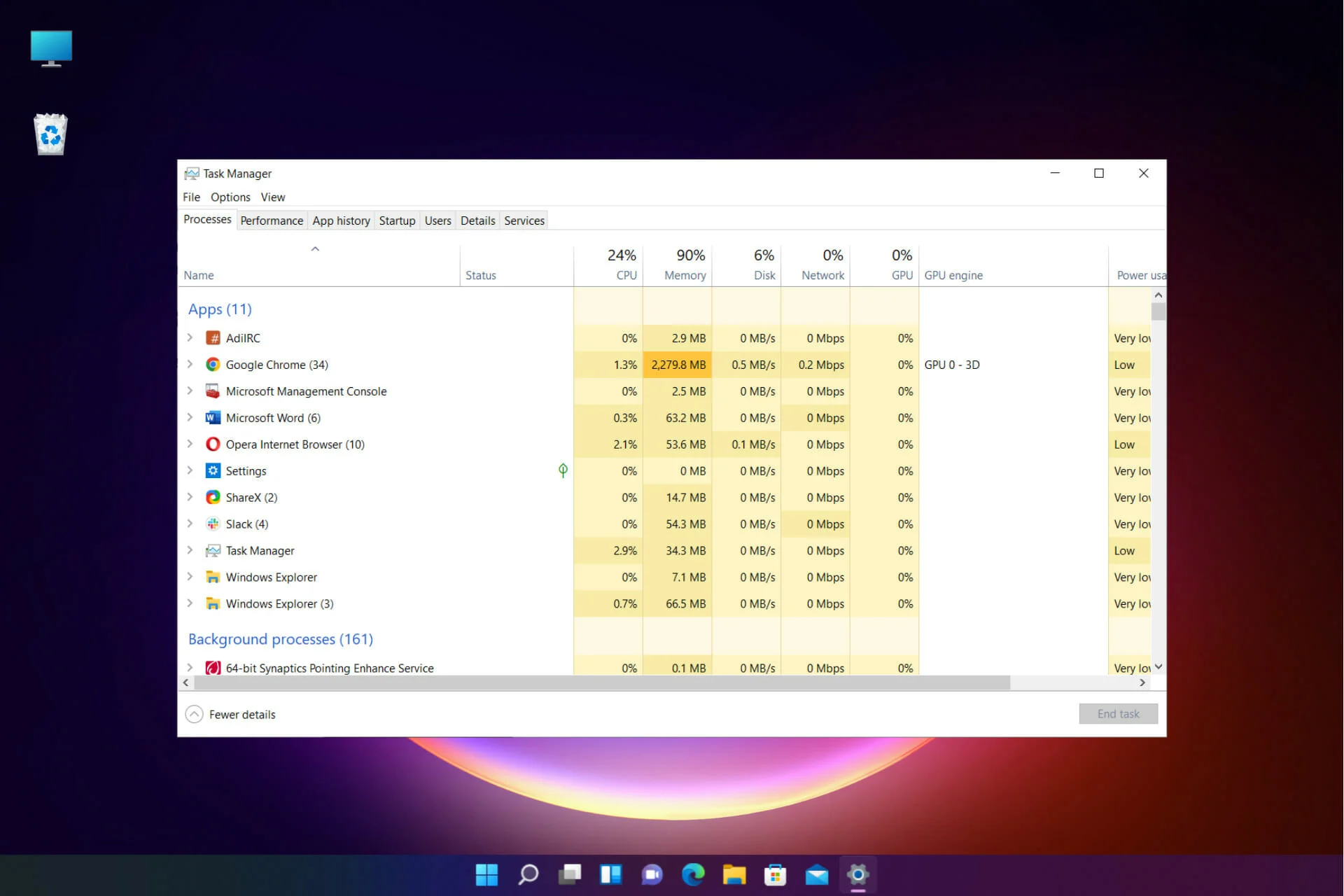How To Disable Background Programs In Windows 10 And Windows 11
Disable Background Programs In Windows 10 And Windows 11, Some Windows Software is active In The Background Even When It is not Used And is performing Actions Such As Updates, Which Can Cause The System Battery To Drain Prematurely And Consume Your Internet Volume.
In Hardware City, we have introduced solutions to turn off disabling background programs in Windows 10 and 11 operating systems. We have answered these questions: why and how to stop Windows programs in the background?
All default Windows applications are allowed to run in the background by Default. However, all Windows users want to improve and increase the speed of their computers. This is possible to some extent by closing background programs.
You may know that these two operating systems are loaded with software in the background to send notifications and receive updates. Restricting the program from running in the Windows background prevents them from doing so.
Although running Windows applications in the background is a practical and appropriate feature, you will noticeably see a decrease in system performance and speed if many programs run in the background.
In addition, many users may face RAM limitations, and running programs with the knowledge of Windows may lead to problems for them. Therefore, it is essential to stop active programs.
Preventing programs from running in the background is one of the capabilities of the Windows operating system.
In the rest of this article, we will discuss how to limit the running of programs in the background of Windows and how to stop background programs in Windows 10 and Windows 11.
How to disable background programs in Windows 10
To close background programs through Privacy settings, follow the steps below:
- First, open the Settings section.
- Click on the Privacy option.
- Select the Background Apps option.
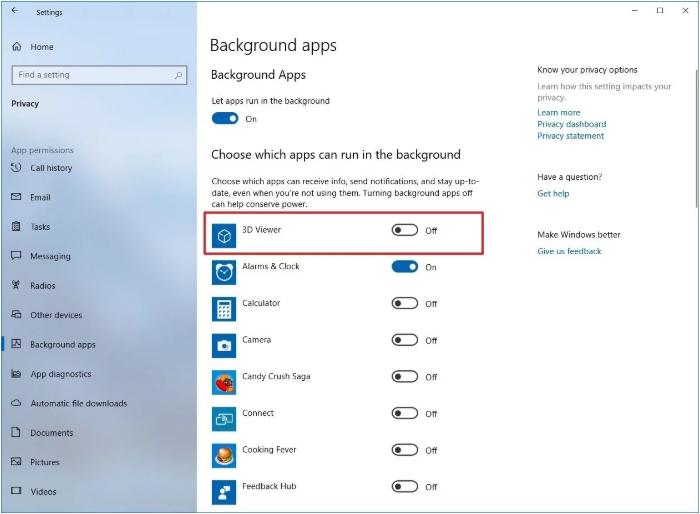
- In this section, you can control the execution status of your system programs. Active programs can be stopped by changing the position from On to Off.
Also, to prevent apps from running in the background, just set the “Let apps run in the background” option to “Off.”
After completing the above steps, you can continue to use your system software daily. However, when closing each of them, the activity of that software is generally stopped until it is rerun.
How to stop programs running in the background of Windows 10 through system settings
There is another method for tablets and laptops equipped with Windows 10, in addition to the possibility of disabling background programs through Privacy settings. Portable device users can also prevent apps from running in the background through power-saving settings.
Of course, this feature is automatically activated when the device’s battery is reduced to less than 20%. However, closing background programs by starting them manually is also possible. To do this, follow the steps below:
- First, open the Settings section.
- Click on the System option.
- Select the Battery option.

- At the bottom of the screen, set the “Battery saver status until next charge” option off.
How to stop programs running in the background through Windows 11 settings
The easiest way to prevent programs from running in the background is through the program settings in Windows 11. Follow the steps below to disable background apps from settings.
- First, click the start menu and select the gear cycle icon or Settings. It is also possible to use Win + I keys to open the settings window faster.
- Click on the Apps option on the left side of the opened window.
- On the right side, select Installed Apps.
- Find the desired program, click the three dots menu next to it, and select Advanced Options.

- Select Never using the available drop-down menu in the background apps and permissions section. This will prevent the desired program from running in Windows’s background.
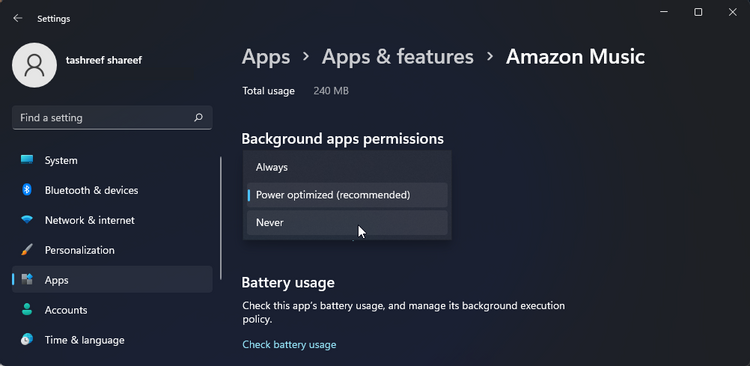
Note that this method of disabling background apps can only disable UWP apps installed on the user’s system when Windows is installed. Therefore, you can use Task Manager to personalize as much as possible and prevent software from running automatically when the system is turned on.
Preventing software from running automatically when Windows starts up
Stopping programs from running in the background is very simple with Task Manager, and you should select the Startup tab after running it. The list of programs that run automatically when Windows starts up can be seen here. Now, like the desired application and click on the Disable button.
Remember that running some applications, such as drivers and antivirus software, is necessary when the system is turned on, so you should not turn off such applications in this section.
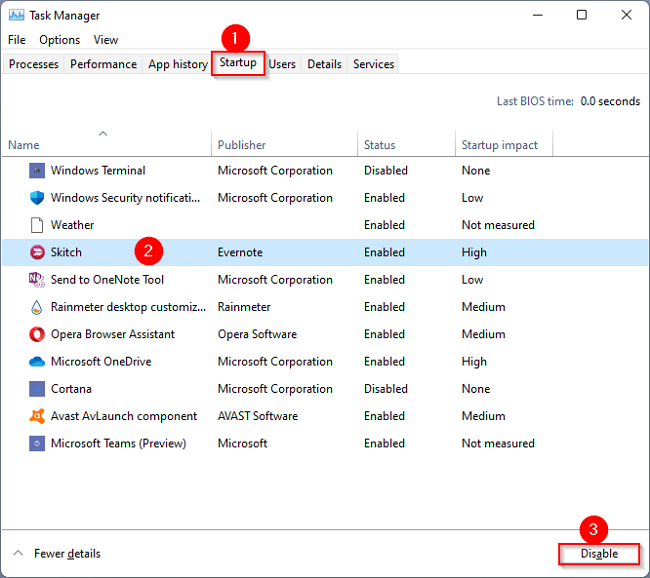
Another method that can be used to prevent unwanted applications from running when Windows boots is to use the MSConfig command. To do this, open the start menu and type Run. Then press the Enter button and enter the MSConfig command in the open small windows.
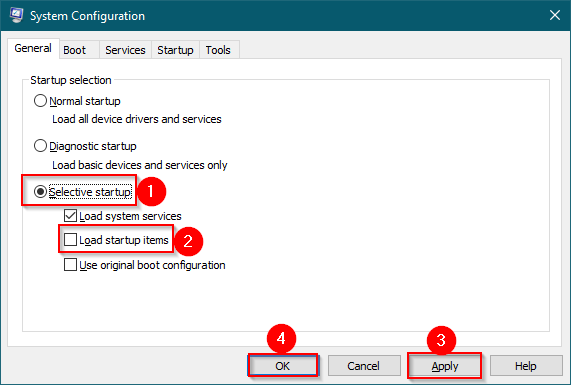
Click the General tab in the System Configuration window and enable the Selective startup option. You must turn off the check before the Load startup items option.
How to close and turn off background apps in Windows 11 by changing battery settings
If you’re using a laptop, you can stop apps running in the background in Windows 11 by analyzing their battery usage in Settings.
Note that preventing apps from running in the background with this method is reversible, and when you change battery mode, your settings will also change. Next, we will explain how to close background programs.
- First, click the start menu and select the gear cycle icon or Settings. It is also possible to use Win + I keys to open the settings window faster.
- Click on the System option on the left side of the opened window.
- On the right side, select Power & Battery.
- Click on the battery usage option in this section to see more settings.
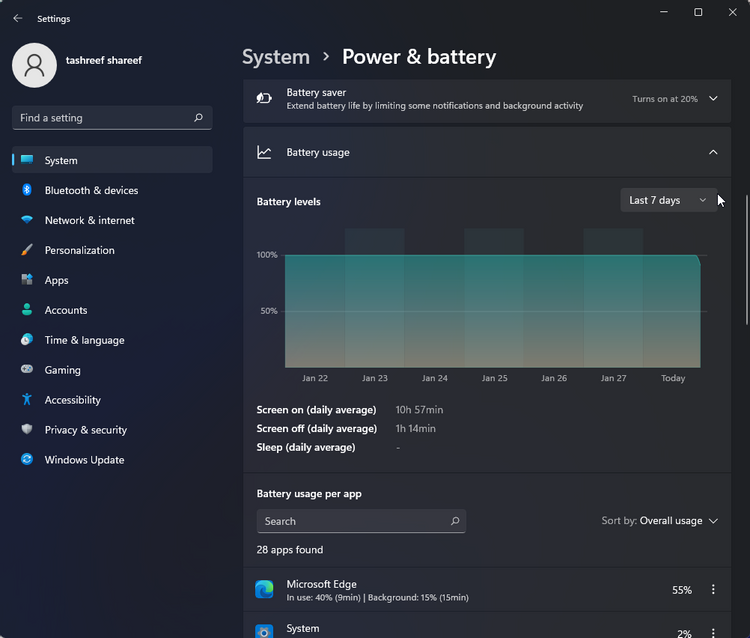
- In this section, you will see a list of software available on the computer and their battery consumption.
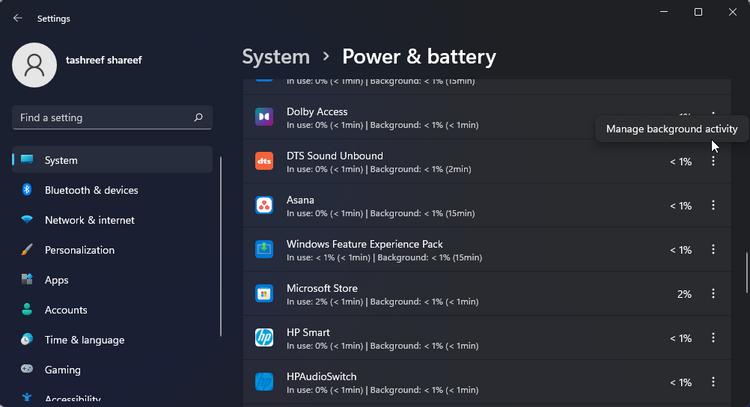
- Find the software you want to disable from running in the background. Tap the three dots menu icon next to it and select Manage background activity.

Close background programs by changing the Windows 11 registry
You can also use the Registry Editor method to modify the registry files to turn off background programs in Windows 11. Registry files are a sensitive part of the Windows operating system. You must follow the steps carefully and make a backup copy of the registry files before closing the background programs.
- Press Windows + R, type regedit, and press Enter.
- Use the address bar at the top to navigate to the following key:
HKEY_LOCAL_MACHINE\SOFTWARE\Policies\Microsoft\Windows
- Right-click the Windows key, go to the New section, select the Key option, and name AppPrivacy.

Inside the AppPrivacy section, right-click anywhere in the space, go to New, and select DWORD (32-bit) Value. Name it LetAppsRunInBackground.
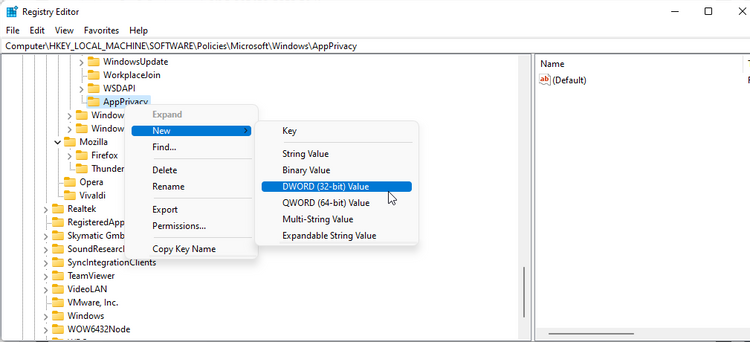
Right-click the LetAppsRunInBackground value and select Modify. In the Value data field, type 2 and click OK to save the changes.
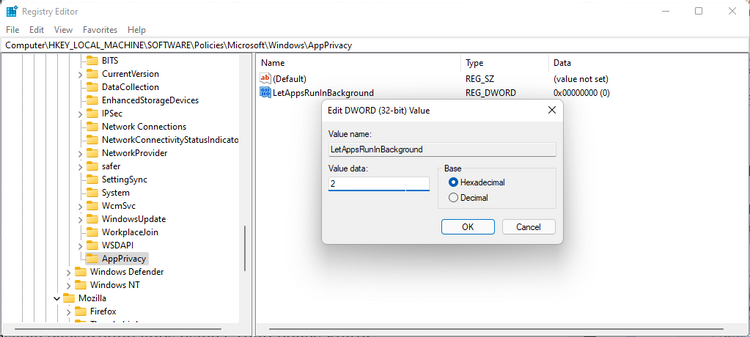
Exit the registry editor and restart your computer to stop the active programs from taking effect. This method should prevent all your computer software from running in the background.
Prevent programs from running in the Windows background through Group Policy.
Group Policy software is handy to change how your system works. Naturally, it can also be used to close computer background programs.
You can also use the Group Policy editor to turn off the simultaneous execution of all programs in the background. Note that the Group Policy Editor is only available in the Pro, Education, and Enterprise editions of the Windows operating system. You cannot use this feature if you aim to turn off background programs in versions like Home.

But to stop active programs, press the Windows key + R to open the Run window. After that, type gpedit. msc and press Enter.
In the Group Policy window, follow the path below:
Configuration\ Administrative Templates\ Windows Components\ App Privacy
Double-click the “Let Windows apps run in the background” option on your right side.
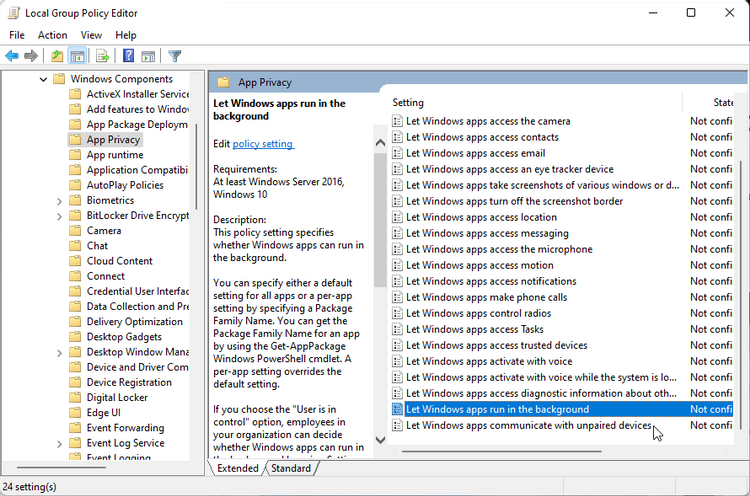
Select the Enabled option, and then in the Options section, click on the Default for all aDefaultp-down menu and select the Force Deny option. Finally, click OK and Apply to save the changes.
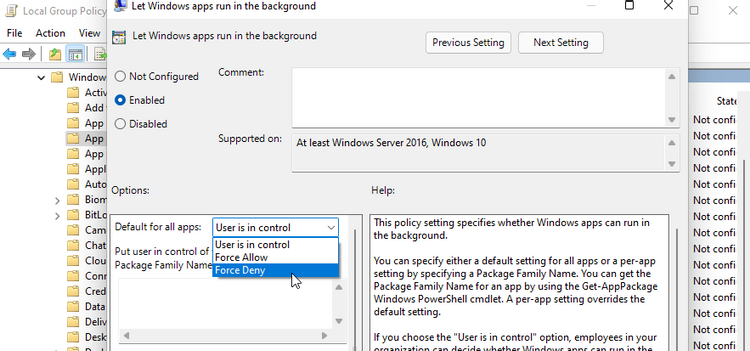
Conclusion
The tutorial on disabling and closing background programsDefaultdows 10 and 11 ends here. All core Windows software is allowed to run in the background by Default. PreventiDefaultrams from running in the background is a great way to manage system resources and allocate them to oDefaultograms. Doing this will be very useful for users facing limited RAM, as they can have more RAM space after closing the programs running in the background of Windows.
Also, in the end, it should be said that the above methods only work for software downloaded through the Windows Store. You should close the software manually to turn off background programs and prevent wasting system resources.
Closing background programs on laptops prevents battery drain and removes unnecessary workload from your system. However, if keeping software up-to-date is essential to you, using this method can be troublesome in some cases. Of course, all the items mentioned in this article can be reversed. If the user encounters a problem after closing the Windows background programs, he can return to the same path and perform the completed process as a photo.
It is hoped that you can use Windows better by learning to stop active programs in Windows 11 and 10 in Hardware City. Ultimately, we invite you to share your opinions and ask questions.
